July 2009 Issue
Issue Summary:
A 2000-up Nissan vehicle with the RE4R01A or RE4F04A has a complaint of a slightly delayed 1-2 upshift and a quick over-speed or cut-loose on the 2-3 shift.
A Subaru vehicle with the 4-EAT-Phase II may exhibit a slight delayed forward engagement and will have no reverse. When the engine is shut off the vehicle lurches backward.
A Mitsubishi vehicle with the F4A51 transaxle has no forward movement when the headlamps are turned on.
Before or after overhaul, a Nissan/Infiniti with the RE5R05A may exhibit various upshift complaints.
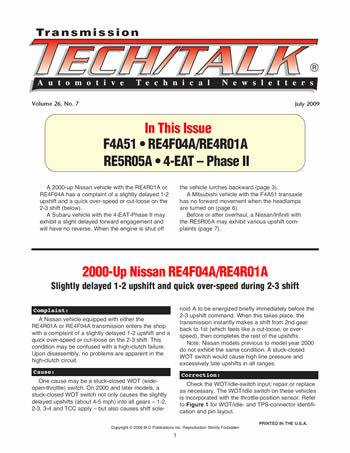
Change May Be Good – But Be Careful
In the following situations each converter builder made what he believed to be a single change. For each of them, the change did not seem to cause any problems at first. Unfortunately, devastating long-term consequences occurred in both situations because they failed to realize that they had made more than one change.

Things Are not Always What They Appear to Be
Unfortunately for the owner this exchanged unit did not work correctly. Since the facility did not do transmission work the owner took the car to Chris Colucci at CNS Transmissions in Walnut, Miss. Chris saw that the vehicle was in a failsafe condition with lights blinking on the dash. The DTCs he extracted revealed gear-ratio-error problems. Upon learning that the transmission had been replaced, he put 2 and 2 together and realized that they might have installed a transmission with an incorrect ratio.
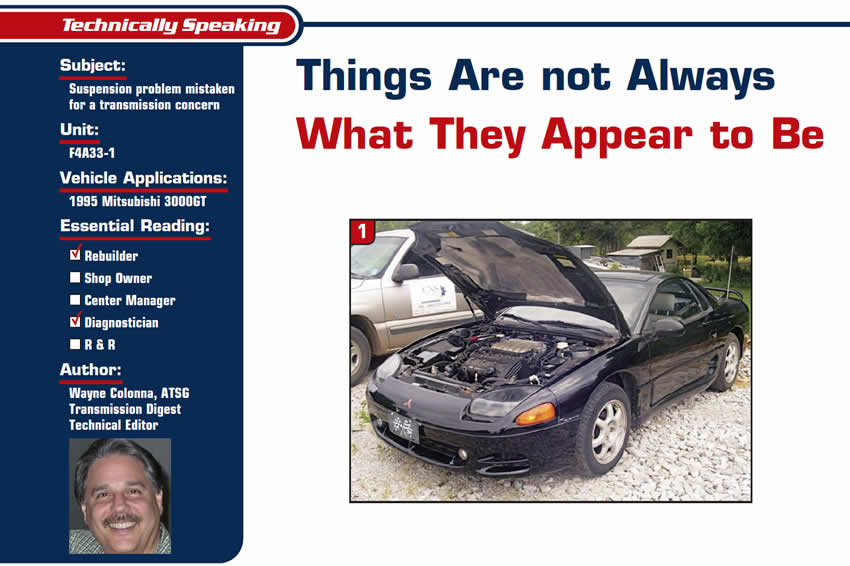
Hindsight Is 20/20
When we installed the new battery we checked the charging system again (the lazy way mentioned previously), and since we saw 13.8 volts we released the vehicle. A few days later she came back complaining of the same problem. This time when we checked the charging system (same old lazy way) we noticed that the generator was not charging, so we recommended replacing the generator, because this type of generator uses a one-way clutch on the pulley and is known to go bad, so we figured (assumed) that that was why we had seen the system charge at some times and not others.
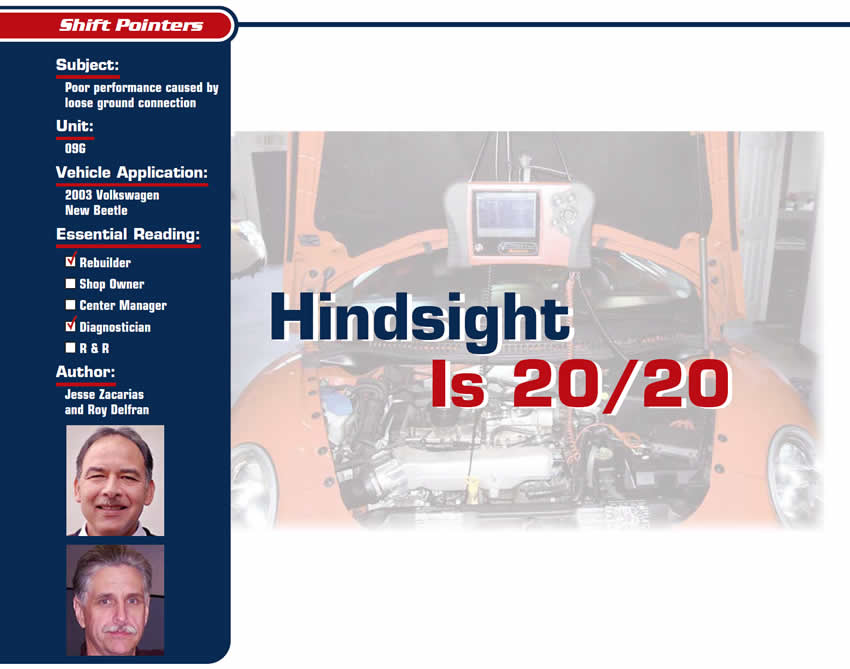
Identifying Aisin Manual Transmissions and Transfer Cases
One of the major problems associated with buying and selling units and parts in our industry is the need to properly identify the unit you are working on. This article is devoted to identifying current-production models of manual transmissions and transfer cases produced by Aisin AI, with the hope of making it easier for you to obtain parts in the aftermarket. Past production is not listed but includes the familiar AX5, AX15 and R151 Toyota transmissions.
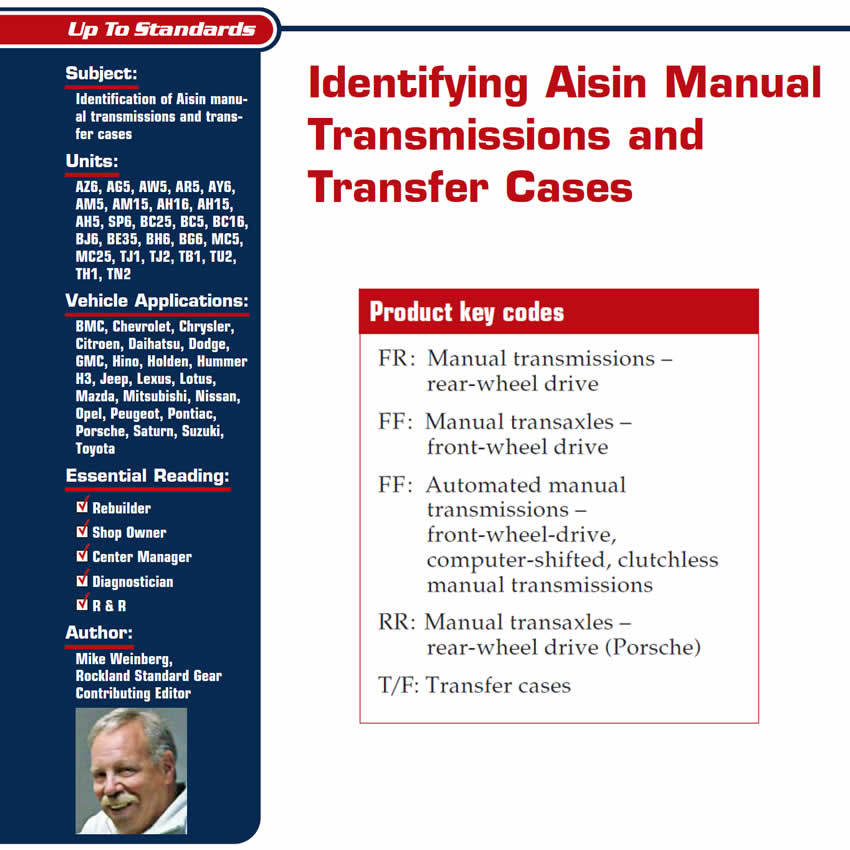
‘Petites Pièces, Gros Problèmes’ (little pieces, big problems)
The story goes something like this: The customer came in to the shop complaining of no overdrive in a 4R70W. There are no codes or obvious external causes, but the complaint is verified on the road test. The unit will not go into overdrive.
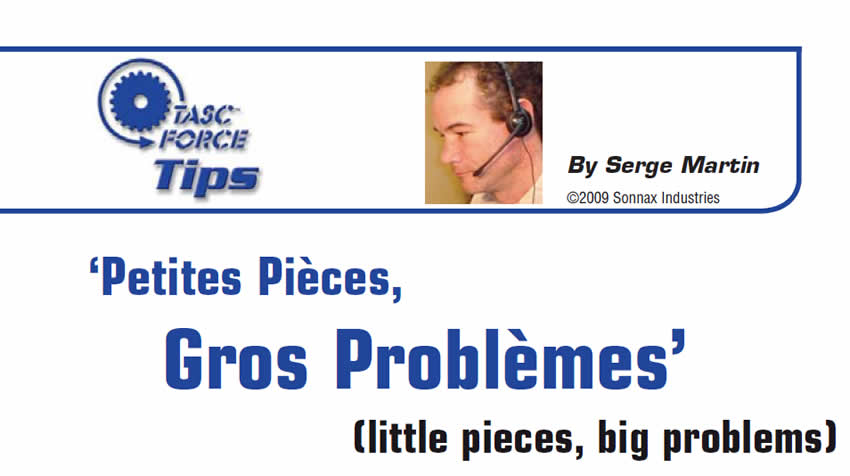
Extra Diagnostic Steps Prevent Mistaken Assumption
A 2000 Dodge Caravan with a 604 transmission was brought into one of our Certified Transmission locations with the customer concern of no shifts and no power. Our initial diagnostic checks confirmed that:
• The transmission was in limp mode
• The speedometer was inoperative
• The PRNDL lights were illuminated.
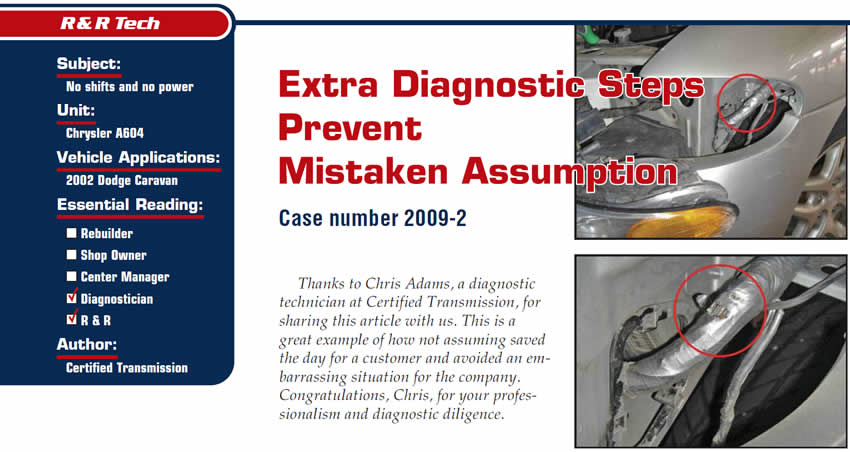
A Tale of the Blue Catera
We just finished a Cadillac Catera for a customer of another shop that took the car to still another shop that brought it to me to put on a timing belt. We were told that the first shop had replaced most of the parts because the technician found a Web site that addressed the problem this car was having. The different fixes, the Web site suggested, were to replace most of the parts – none of which seemed to fix his problem. I’m sorry if anyone gets offended out there, but it just seems that there is something inherently wrong with an auto shop that fixes cars by popular opinion on an Internet Web site. As I’ve heard Mark Warren say, “A monkey with a dart board would have a better chance at guessing right.”
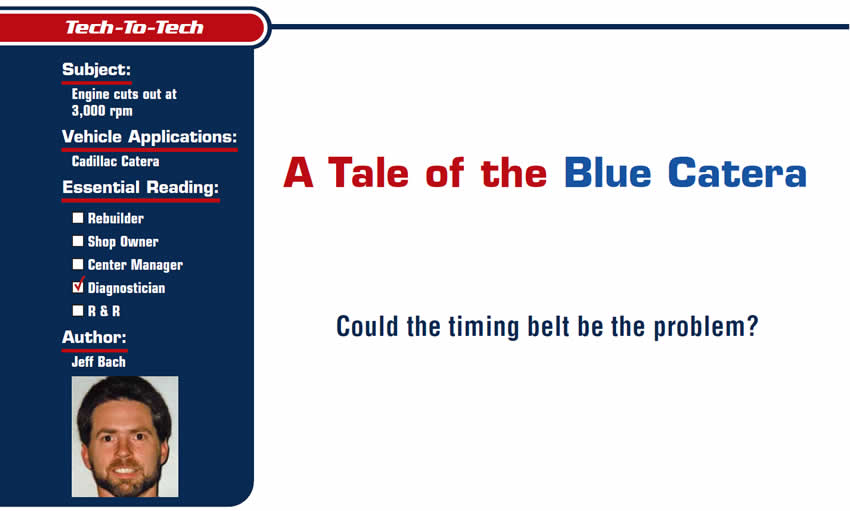
Are You Guilty of Slippin’ and Slidin’?
There are many facets of business that must be managed regularly to maintain the proper levels of sales and productivity. The first step is to stop assuming that the right things are being done just because they were set in motion at some point. Without continual supervision they can rapidly deteriorate and the best ideas and systems can disappear only to be replaced by the most-convenient ones, regardless of whether those make money – and they usually don’t.

